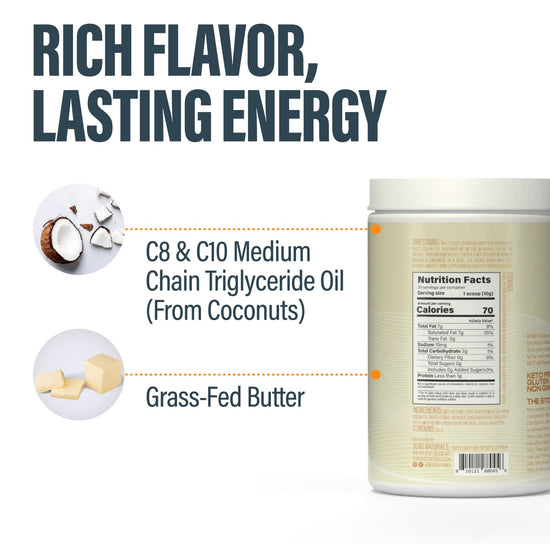Table of Contents
- Introduction
- Understanding Coffee Creamers
- Do You Have to Refrigerate Coffee Creamer?
- Best Practices for Storing Coffee Creamer
- FAQs
- Conclusion
Introduction
Have you ever found yourself standing in front of your fridge, debating whether to put that bottle of coffee creamer back in or leave it out on the counter? You're not alone. The question of whether to refrigerate coffee creamer is one that has sparked countless debates among coffee lovers. Some swear by the fridge, while others leave it out, trusting their instincts and years of habits.
Understanding the storage requirements of coffee creamer is crucial for ensuring that your morning cup of joe remains delicious and safe to drink. With a variety of creamers available today—liquid, powdered, dairy, and non-dairy—the rules can get a bit murky. Throughout this article, we will explore the different types of coffee creamers, their specific storage needs, and the factors that influence their freshness.
By the end of this post, you’ll have a clear understanding of how to best store your coffee creamer, whether it’s a creamy indulgence or a quick powdered solution. We will also provide practical tips to help you maximize the shelf life of your creamers, ensuring that each cup of coffee you make is as delightful as possible.
Understanding Coffee Creamers
What is Coffee Creamer?
Coffee creamer is a popular addition to many people's morning routines. It's designed to enhance the flavor and texture of coffee, offering a creamy experience that can make every sip enjoyable. Creamers come in a range of forms, including liquid creamers, powdered creamers, and flavored options, providing a variety of choices to suit individual preferences.
Types of Coffee Creamers
-
Liquid Creamers: These are typically found in the refrigerated section of the supermarket and come in both dairy and non-dairy varieties. Dairy creamers are made from milk or cream, while non-dairy creamers may use ingredients like soy, almond, or coconut milk.
-
Powdered Creamers: These shelf-stable options are made from dehydrated ingredients and can be stored at room temperature. They are often seen as convenient for travel or for those who only occasionally enjoy coffee.
-
Flavored Creamers: Available in both liquid and powdered forms, these creamers come in various flavors like vanilla, hazelnut, and seasonal favorites such as pumpkin spice. The flavoring may impact the creamer's storage requirements.
-
Single-Serve Creamers: Often found in restaurants or cafes, these small cups or pods of creamer are typically shelf-stable until opened.
The Science Behind Creamer Stability
The stability of coffee creamers is influenced by their ingredients. Dairy products, for instance, are more prone to spoilage due to the presence of proteins and fats that can develop bacteria if not stored properly. Non-dairy creamers often contain preservatives and stabilizers that help them resist spoilage, allowing them to remain shelf-stable until opened.
Do You Have to Refrigerate Coffee Creamer?
The General Rule
The answer to whether you have to refrigerate coffee creamer largely depends on the type of creamer you have. Here’s a breakdown:
-
Liquid Dairy Creamers: These should always be refrigerated after opening. They typically contain milk, cream, or other perishable ingredients that can spoil if left at room temperature for too long. The general guideline is to consume them within 7 to 10 days after opening, and they should not be left out for more than two hours.
-
Liquid Non-Dairy Creamers: These are often designed to be shelf-stable until opened. However, once opened, it is advisable to refrigerate them to maintain freshness. Check the packaging for specific instructions, as some may have added preservatives that allow them to last longer at room temperature.
-
Powdered Creamers: Powdered coffee creamers do not need refrigeration. They can be stored in a cool, dry place and have a shelf life of up to 24 months when kept sealed. Once opened, they should be used within a few months for optimal flavor.
-
Single-Serve Creamers: These are usually shelf-stable until opened. After opening, they should be consumed promptly, as they are more susceptible to bacterial contamination.
Why Refrigeration Matters
Refrigeration plays a crucial role in preventing spoilage, particularly for liquid creamers. When creamers are left at room temperature, they can become a breeding ground for bacteria, especially if they contain dairy. This is due to the temperature range (40°F to 140°F) often referred to as the "danger zone" for food safety.
Signs of Spoilage
Whether you refrigerate your creamers or not, knowing the signs of spoilage is essential. Here are some indicators that your coffee creamer may have gone bad:
- Sour Smell: A noticeable sour odor is a clear sign that dairy products have started to spoil.
- Curdling: If the creamer appears lumpy or has separated, it’s best to discard it.
- Off Taste: If the creamer tastes unusual or off, it’s better to err on the side of caution and not consume it.
Best Practices for Storing Coffee Creamer
To ensure that your coffee creamer remains fresh and safe to use, follow these best practices:
1. Read the Labels
Always check the packaging for specific storage instructions. Some creamers may have unique guidelines depending on their ingredients and processing.
2. Refrigerate After Opening
For liquid creamers, be diligent about returning them to the fridge immediately after use. This helps maintain their freshness and prevents spoilage.
3. Keep Powdered Creamers Dry
Store powdered creamers in a cool, dry place, away from moisture. Ensure the container is tightly sealed to prevent clumping and contamination.
4. Use Clean Utensils
When serving creamers, use clean spoons or utensils to avoid introducing bacteria into the container. This is especially important for liquid creamers.
5. Monitor Expiration Dates
Keep an eye on expiration dates and use creamers before they expire. If unsure about the freshness, it’s safer to discard them.
FAQs
Can I leave my coffee creamer out overnight?
It depends on the type. Liquid dairy creamers should not be left out for more than two hours, while powdered creamers can be left out without issue.
How long can coffee creamer sit out before going bad?
Liquid creamers should ideally not sit out for more than two hours. In contrast, powdered creamers can last much longer at room temperature.
What happens if I consume spoiled coffee creamer?
Consuming spoiled creamers can lead to foodborne illnesses, causing symptoms like nausea, vomiting, or diarrhea. If you suspect that your creamer has spoiled, it’s best to avoid consuming it.
Are there any health risks associated with powdered creamers?
Powdered creamers are generally safe when stored properly. However, those with dietary restrictions should check ingredient labels to ensure they meet their dietary needs.
Conclusion
Understanding how to properly store coffee creamer is essential for enjoying your daily cup of coffee without worry. By knowing the differences between liquid and powdered creamers, as well as their specific storage needs, you can ensure that your coffee experience remains enjoyable and safe.
As we’ve discovered, refrigeration is crucial for liquid creamers but not necessary for powdered options. By following best practices for storage, including reading labels, monitoring expiration dates, and practicing good hygiene, you can enhance the longevity of your coffee creamers, making every cup a delightful experience.
Next time you reach for that coffee creamer, you can do so with confidence, knowing how to keep it fresh and delicious. Enjoy your coffee adventures, and remember—whether you prefer it creamy or black, the perfect cup is just a brew away!
Written by:

Butter MCT Oil Creamer
BUBS Butter MCT Oil Creamer (formerly Halo Creamer): Scientifically-Backed Brain and Body Fuel
BUBS Butter MCT Oil Creamer is your go-to for clean, fast-acting energy and focus, no crash included. It blends creamy grass-fed butter with fast-acting MCT oil powder (C8 and C10) to kickstart your day and keep you sharp. The MCTs go straight to work, giving your brain a quick boost while the grass-fed butter supports digestion and gut health.
Together, they help curb cravings, keep you feeling full longer, and support steady energy throughout the day—perfect for fueling your mornings or powering through the afternoon slump.
Starts at $37.00
Shop

